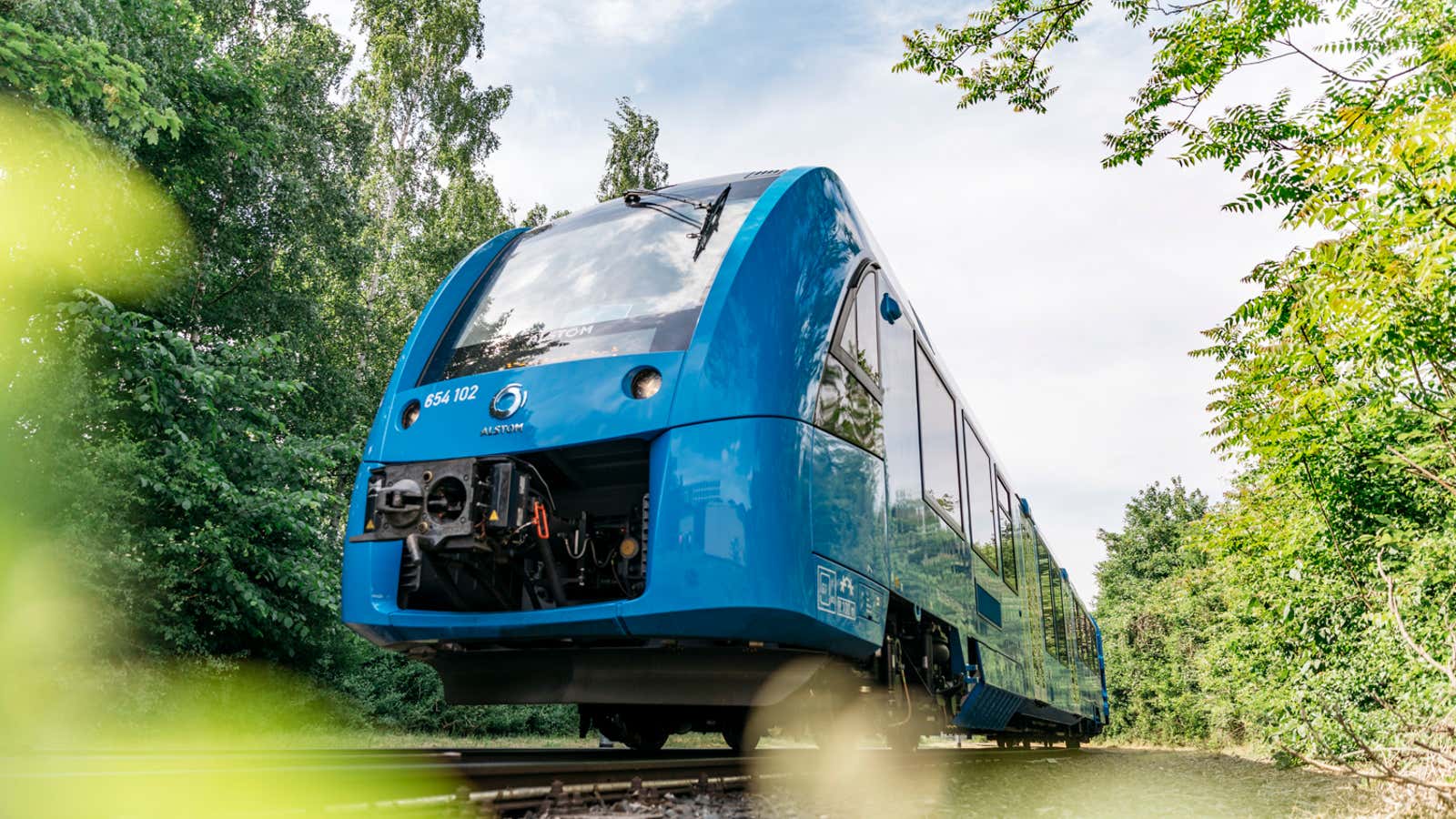The world’s first commercial train powered entirely by hydrogen fuel cells took to the tracks today in northern Germany. The Coradia iLint, developed by French rail company Alstom, will now ferry passengers on a 100km (62-mile) stretch of rail line between the towns of Cuxhaven, Bremerhaven, Bremervörde, and Buxtehude in Lower Saxony.
The hydrogen-powered trains are significantly quieter than their filthy diesel cousins. Of course, they’re way cleaner, since they don’t emit carbon dioxide—only steam and water as byproduct of the process of converting oxygen and hydrogen into electricity.
“Sure, buying a hydrogen train is somewhat more expensive than a diesel train, but it is cheaper to run,” Alstom project manager Stefan Schrank told AFP. The green trains can travel 1,000 km on one tank. Refueling is swift too—about 15 minutes for a refill. Alstom says it will have another 14 trains ready to roll out by 2021.
Hydrogen fuel cells are among the most practical eco-friendly alternatives for trains. Relying on battery power is not a workable option because the trains are so heavy. The other cleaner option would be electrifying the tracks, which is prohibitively expensive for most government. Alstom told Engadget in May that adding electric power to railway lines costs around €1.2 million ($1.4 million) per 1 km (0.6 mile).
